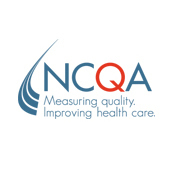Health Care Quality Plateaus for the First Time in a Decade
by
Brendon Nafziger, DOTmed News Associate Editor | October 30, 2009

The latest quality
measures are in
Health care quality failed to improve for the first time in almost a decade in 2008, according to a report issued last week.
In the 128-page report, The State of Health Care Quality 2009, the non-profit insurance accreditor National Committee for Quality Assurance (NCQA) argues that a 12-year streak in health care gains has come to a halt. Across the dozen or so measures studied, including diabetes care, follow-ups for people on long-term medication and appropriate screenings for those at risk for colon cancer or chlamydia, fewer than half showed any improvement in the health plans covered.
The gradual decline in overuse of inappropriate treatments, such as imaging tests for low back pain and antibiotics for bronchitis, also flatlined.
Intriguingly, NCQA also found, at least among the plans studied, almost no relationship between money spent and quality of care in such measures as heart disease, hypertension, asthma and lower back pain.
And in keeping with the findings of other health care rankings, wide regional variation in quality was seen, with the South Central states, such as Louisiana, Texas and Arkansas, coming in dead last. Although NCQA acknowledges there might be demographic reasons for the difference, for example, the region is, in general, poorer than the rest of the country, the committee does not believe this accounts for the whole performance gap.
"We believe there are several factors at work," Daniel Danzig, a spokesman for NCQA, tells DOTmed News by e-mail. "First, the region does have more poverty and more incidence of conditions like diabetes and obesity. But we also believe there is insufficient focus on quality in this region and that the plans are not getting a clear and consistent message that quality matters."
"This kind of regional variation should be unacceptable," he adds.
NCQA believes between 50,000 and 115,000 lives, and about $12 billion in health care costs and lost productivity, could have been saved nationwide in 2008 alone if all insurance plans were at the level of those in the top ten percentiles.
Silver Linings and Limitations
That said, although there is certainly room for improvement, NCQA concedes that some of the health measures have plateaued at a high level. The ones showing the least progress now are those for mental illness and substance abuse, as well as some preventive screenings, including for colon cancer.
And some measures are still improving, for instance, NCQA reports that around 90 percent of Americans with asthma now have access to appropriate care, with little differences among the plans.
